NO MO is the lowest cost personal repellent, per hour of Complete Protection Time, of any repellent now being sold.
Cosmetically appealing and environmentally safe, NO MO will be an effective disease-reduction tool in regions with serious vector control problems.
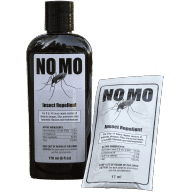
U.S Patent No. 7,846,464 and 8,501,205
INGREDIENTS
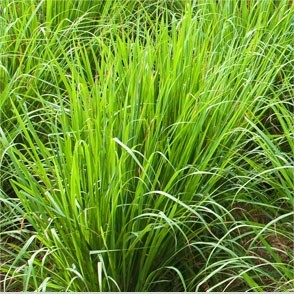
LEMONGRASS OIL
Lemongrass Oil is a distillate of Cymbopogon citratus and C. flexuosus leaves. The oil provides NO MO with a pleasant lemon fragrance.
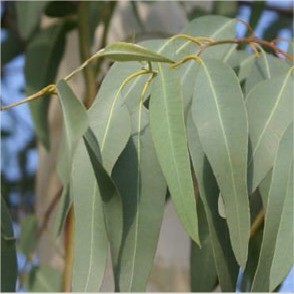
PARA-MENTHANE -3,8-diol (PMD)
P-menthane-3,8-diol is a plant-derived molecule (pines, lemon eucalyptus, etc.) that smells similar to menthol and produces a sensation of coolness on the skin.
Most repellents have limitations that diminish their effectiveness against mosquito-borne disease.
But NO MO’s unique formulation has overcome such constraints, making this repellent a powerful tool for the reduction of mosquito-transmitted infections.
In public health interventions against mosquito-borne diseases, NO MO is especially well suited for mass distribution.
WHY?
1. High Efficacy
In numerous scientific studies, both in the laboratory and the field, NO MO has demonstrated Complete Protection Time (CPT) of 8 to 10 hours against the most important disease vectors. These include Anopheles gambiae (a vector for malaria) and Aedes aegypti (a vector for dengue, yellow fever and Zika)
2. Low Cost
Made with off-the-shelf materials that are available through commercial suppliers around the world, NO MO can be produced for the lowest cost, per hour of Complete Protection Time, of any repellent currently manufactured. Daily use for 1 month for a family of 4 = $6.50 in Ghana
3. High User Acceptance
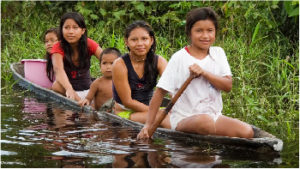 Human societies have a diverse “culture of smell”, the sensibility that causes people to accept or reject the many chemical signatures we call odors. In poor rural areas where mosquito-borne disease abounds, the aromatic oils of familiar plants are often more easily accepted in consumer products than the industrial/synthetic odors manufactured for that purpose abroad. For example, lemongrass has been widely cultivated as a medicinal plant by indigenous people in South Asia and the Americas, and the oil distilled from its leaves is still used in many local products (soaps, candles etc). It is also what distinguishes the fragrance of NO MO, and perhaps because of this, it fits the olfactory culture of numerous villages in Peru and Ghana where it was studied. In contrast, the odor of DEET seems much less attractive to rural folk around the world. In a four-month repellent study conducted in the Peruvian Amazon in 2007, 98% of 2200 people who used NO MO daily said they would continue using it voluntarily when the study ended.
Human societies have a diverse “culture of smell”, the sensibility that causes people to accept or reject the many chemical signatures we call odors. In poor rural areas where mosquito-borne disease abounds, the aromatic oils of familiar plants are often more easily accepted in consumer products than the industrial/synthetic odors manufactured for that purpose abroad. For example, lemongrass has been widely cultivated as a medicinal plant by indigenous people in South Asia and the Americas, and the oil distilled from its leaves is still used in many local products (soaps, candles etc). It is also what distinguishes the fragrance of NO MO, and perhaps because of this, it fits the olfactory culture of numerous villages in Peru and Ghana where it was studied. In contrast, the odor of DEET seems much less attractive to rural folk around the world. In a four-month repellent study conducted in the Peruvian Amazon in 2007, 98% of 2200 people who used NO MO daily said they would continue using it voluntarily when the study ended.
“No one has seen a repellent here before, but when neighboring villagers (not in the study) saw its effect on the nuisance bugs that drive us crazy, they wanted to get some, too.”
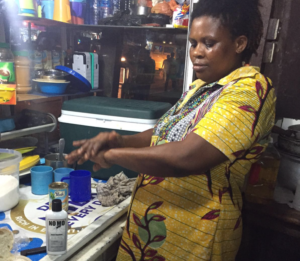 Generally, wherever disease vectors gather, there are also great numbers of nuisance mosquitoes in the airspace. These aggressive biters can outnumber disease vectors by more than 20 to 1. In such circumstances, immediate relief from painful bites tends to galvanize user interest in the product, thus assuring high levels of user compliance and consequently reducing infections from malaria vectors later at night.
Generally, wherever disease vectors gather, there are also great numbers of nuisance mosquitoes in the airspace. These aggressive biters can outnumber disease vectors by more than 20 to 1. In such circumstances, immediate relief from painful bites tends to galvanize user interest in the product, thus assuring high levels of user compliance and consequently reducing infections from malaria vectors later at night.“My job keeps me outdoors most of the night and I have to battle with mosquitoes. In fact, they are a nuisance! I have used several mosquito repellents which I have to apply every 2-3 hours. For NO MO, I apply it only once and I have my peace all night.”
4. Non-toxic
NO MO repellent uses non-toxic ingredients. Only two cases of mild dermatitis were reported in a four-month study of 2200 users in Peru.
It is safe to use for children and pregnant women.
“I have used NO MO now for 3 months on my child. Ever since I started using it, he has not had any skin rashes or mosquito bites. You can apply it when you are not under a mosquito net and I assure you that no mosquito or insect will come close to your child.”
NO MO can be applied effectively against a diverse array of the world’s most dangerous vector-borne diseases, both in combination with other interventions and alone. That makes it an important tool for disease reduction in poor communities around the world.
